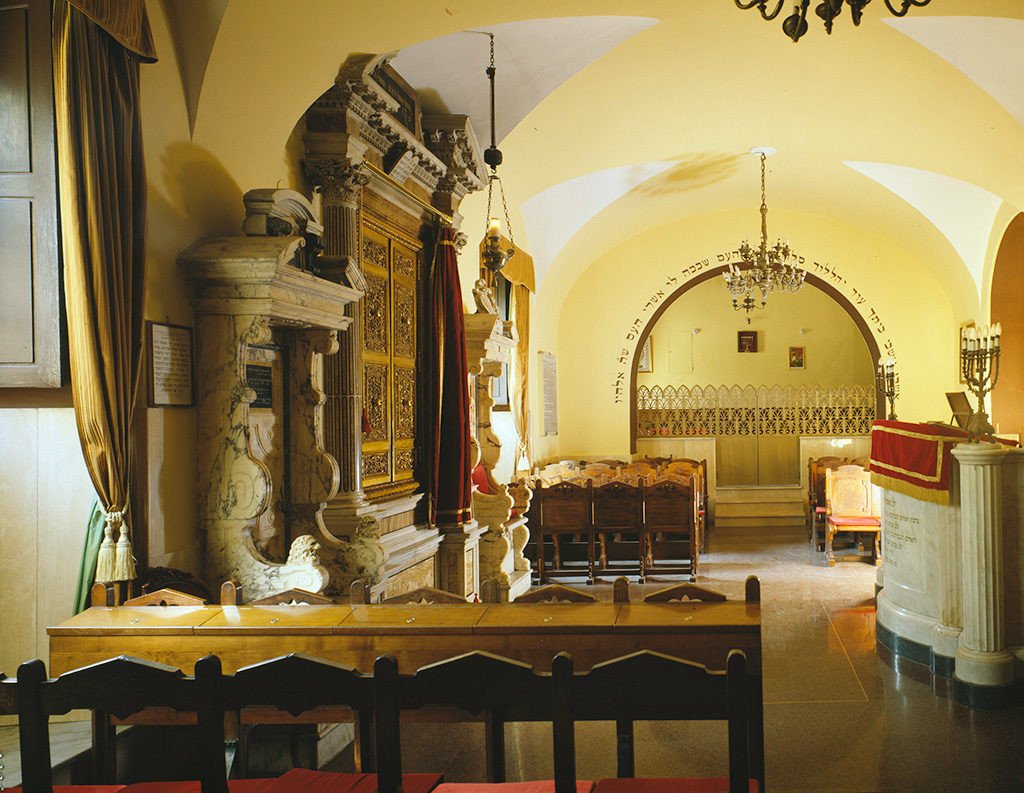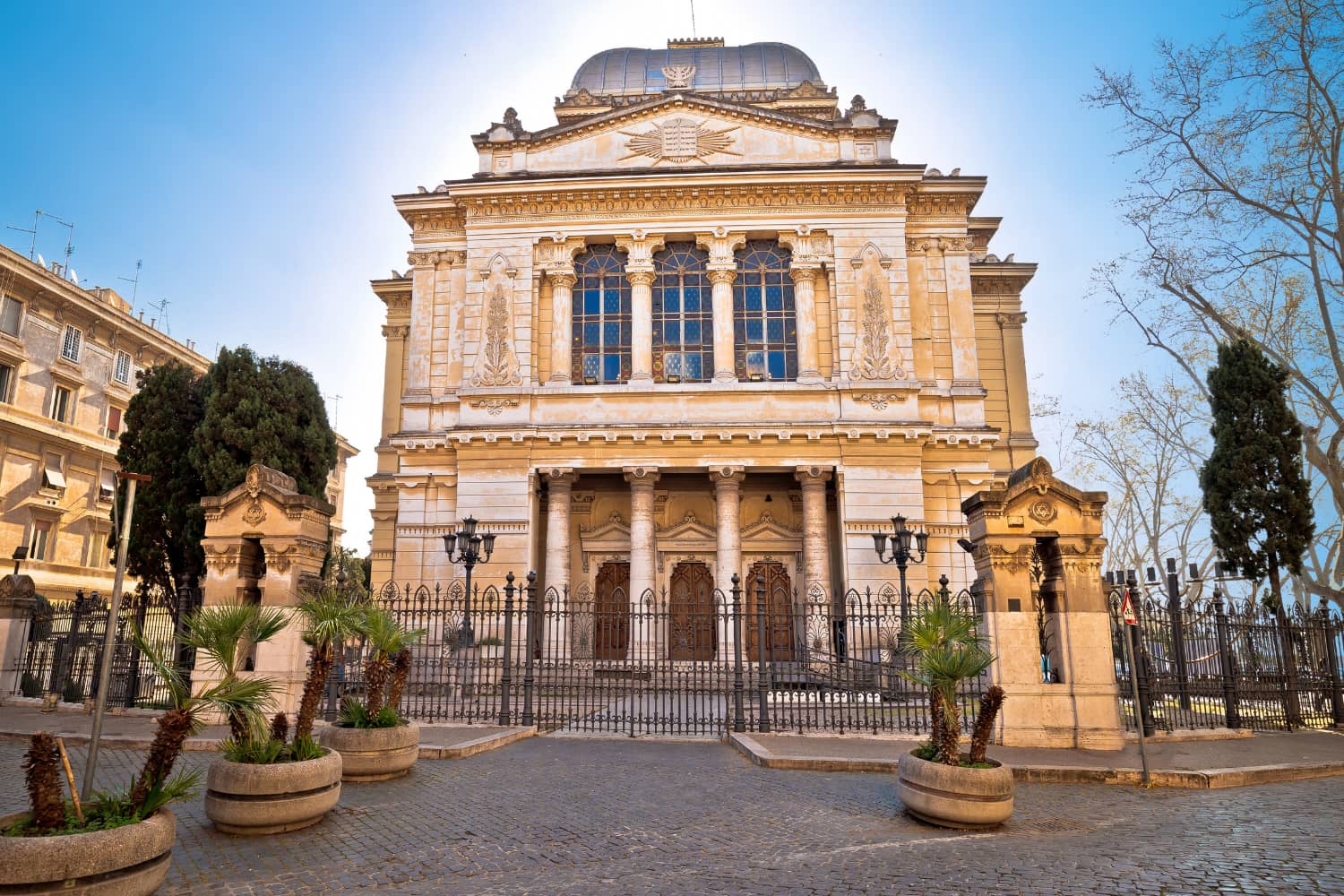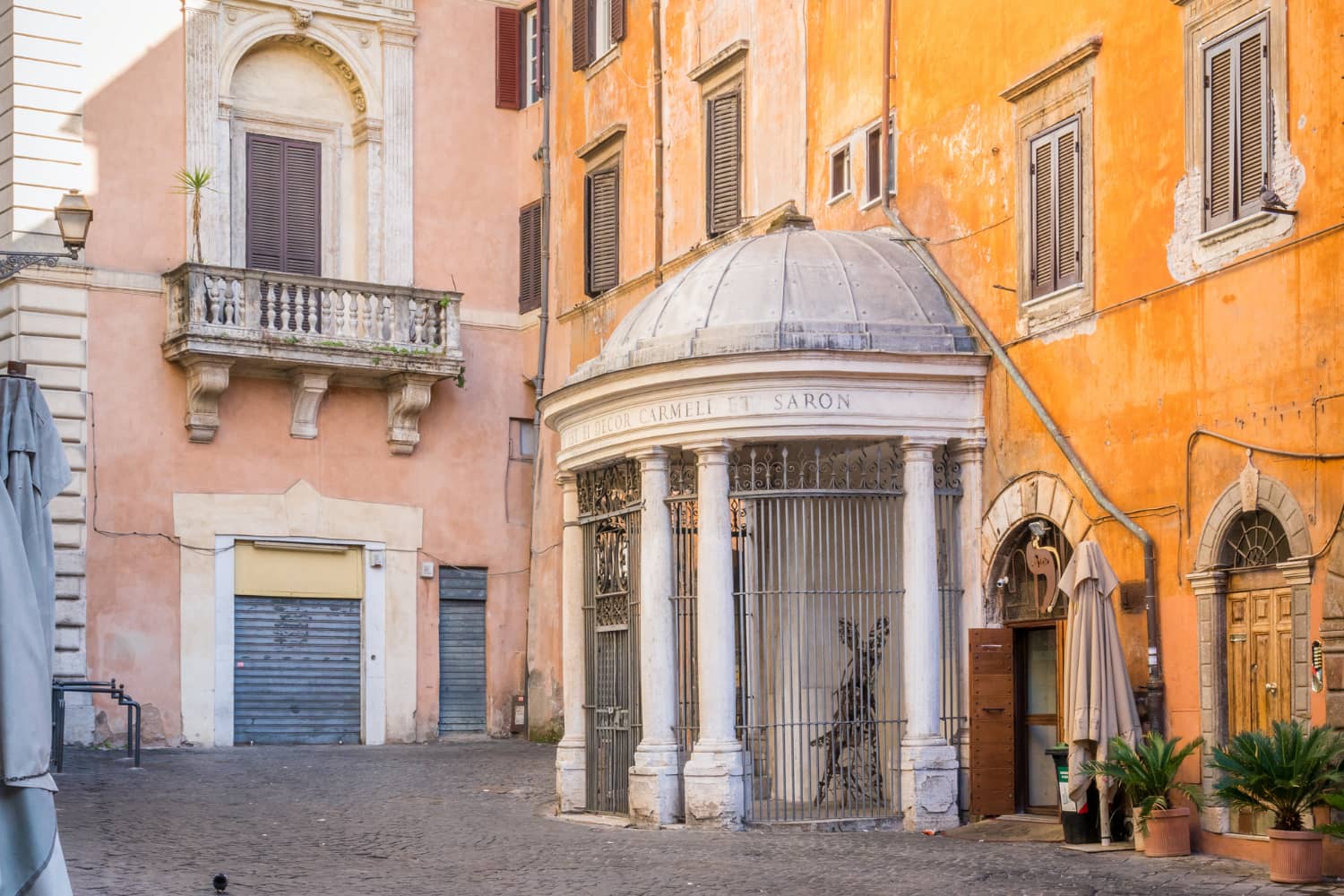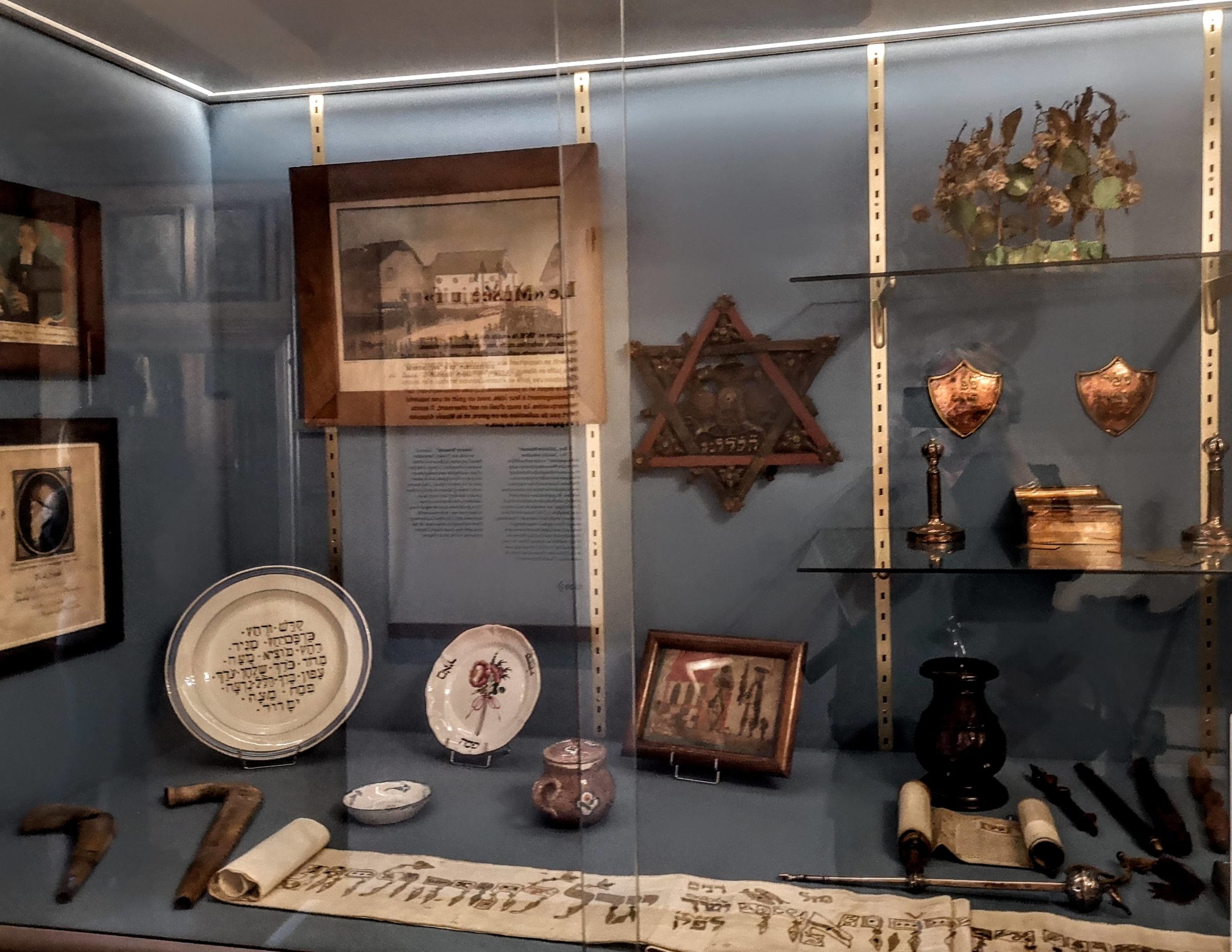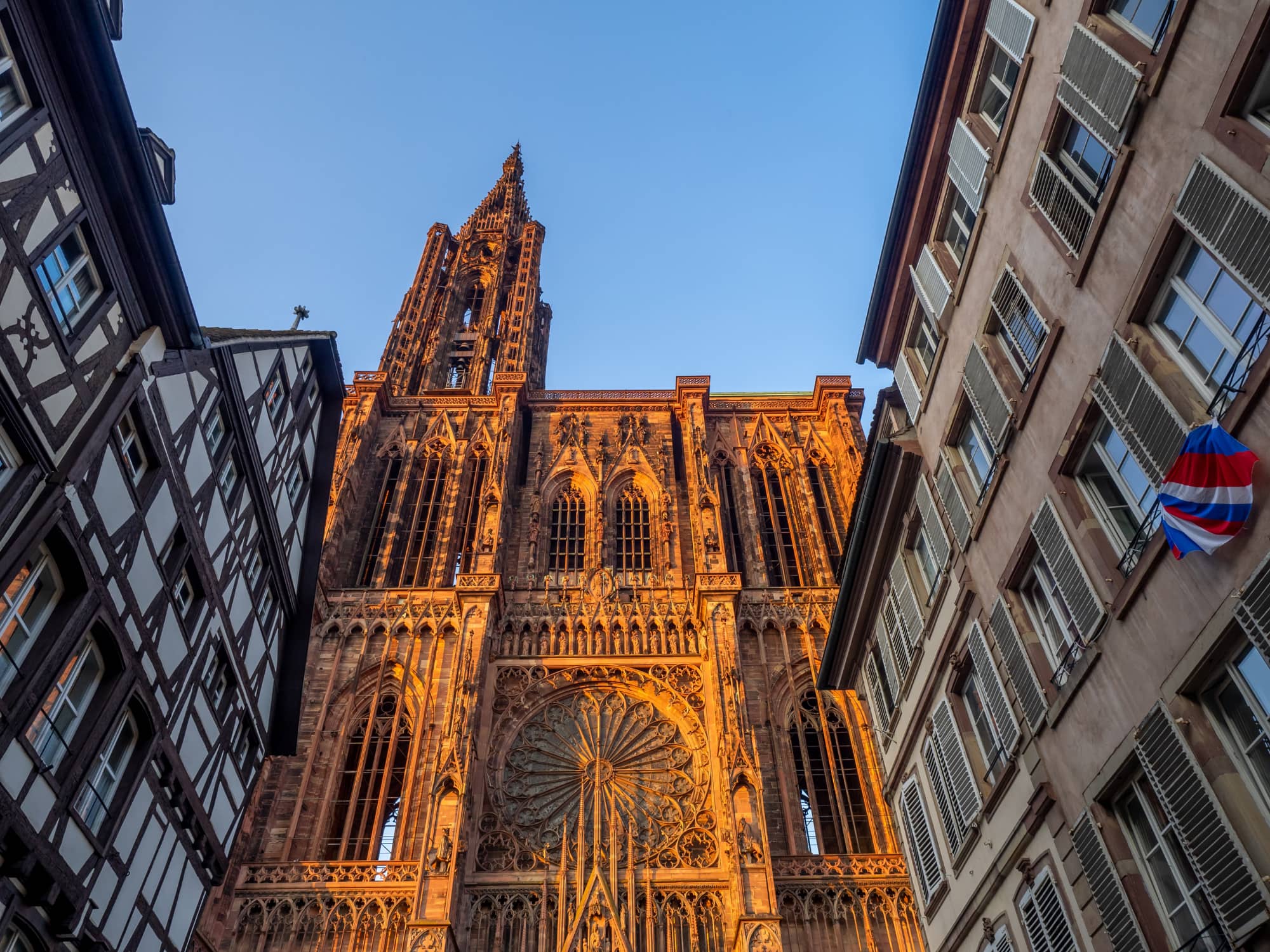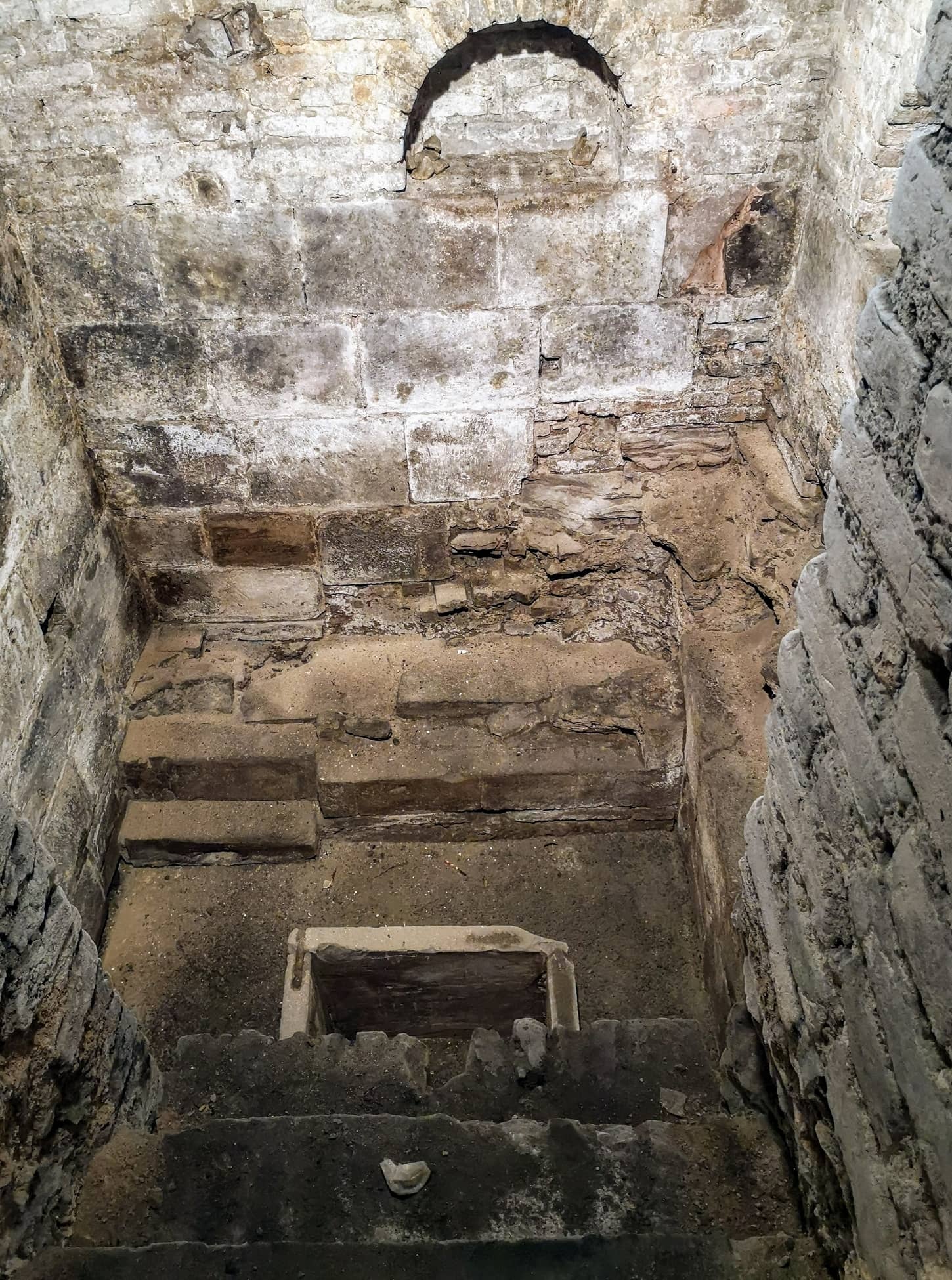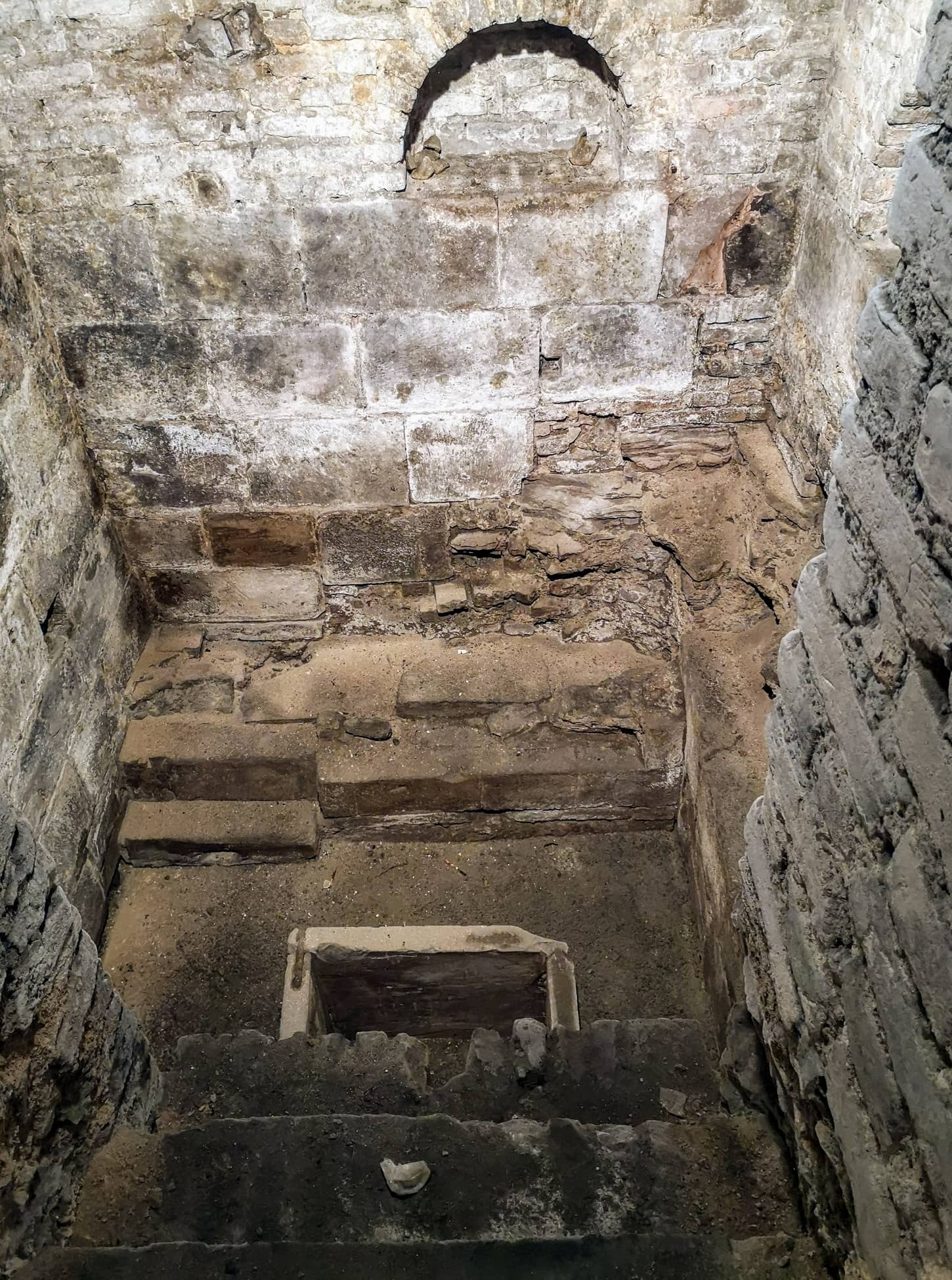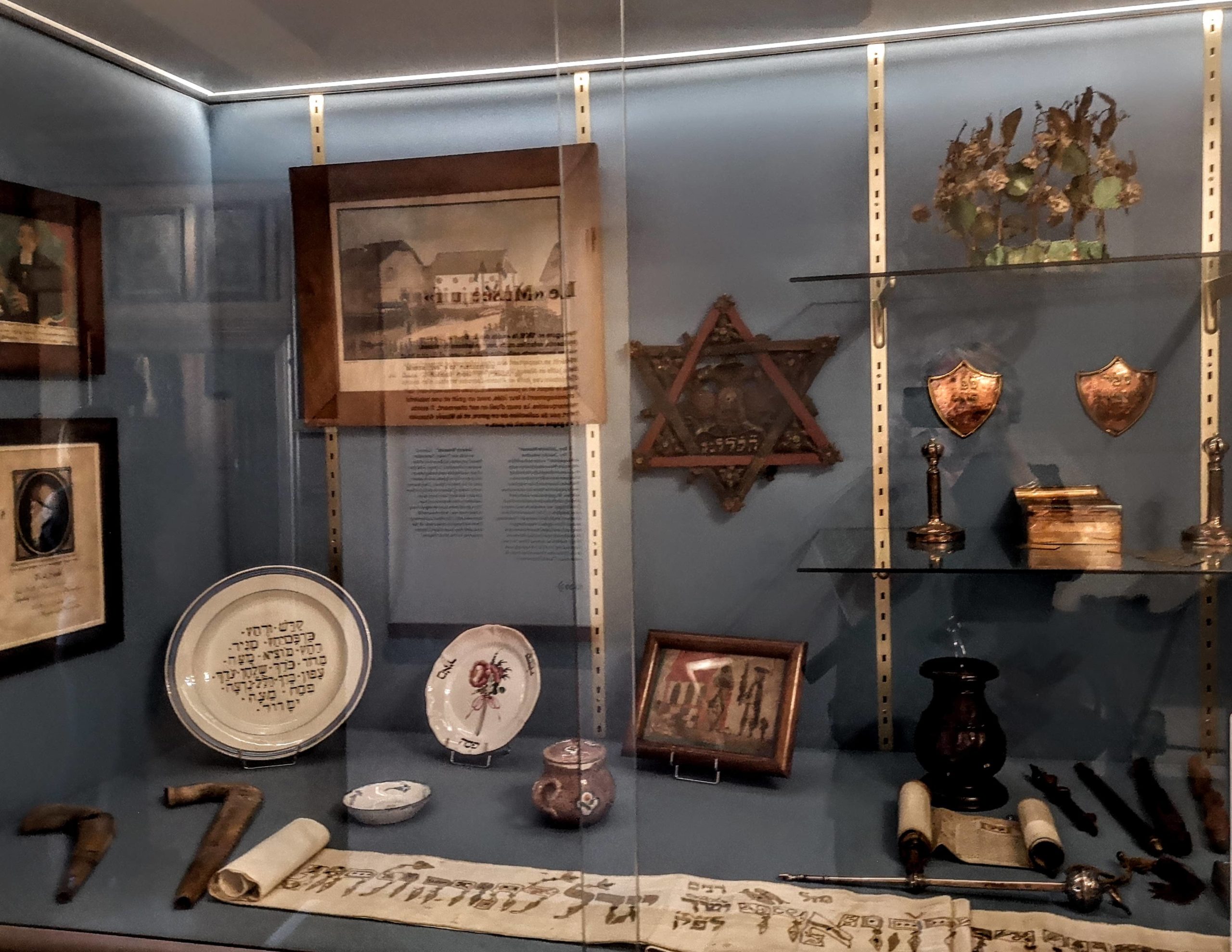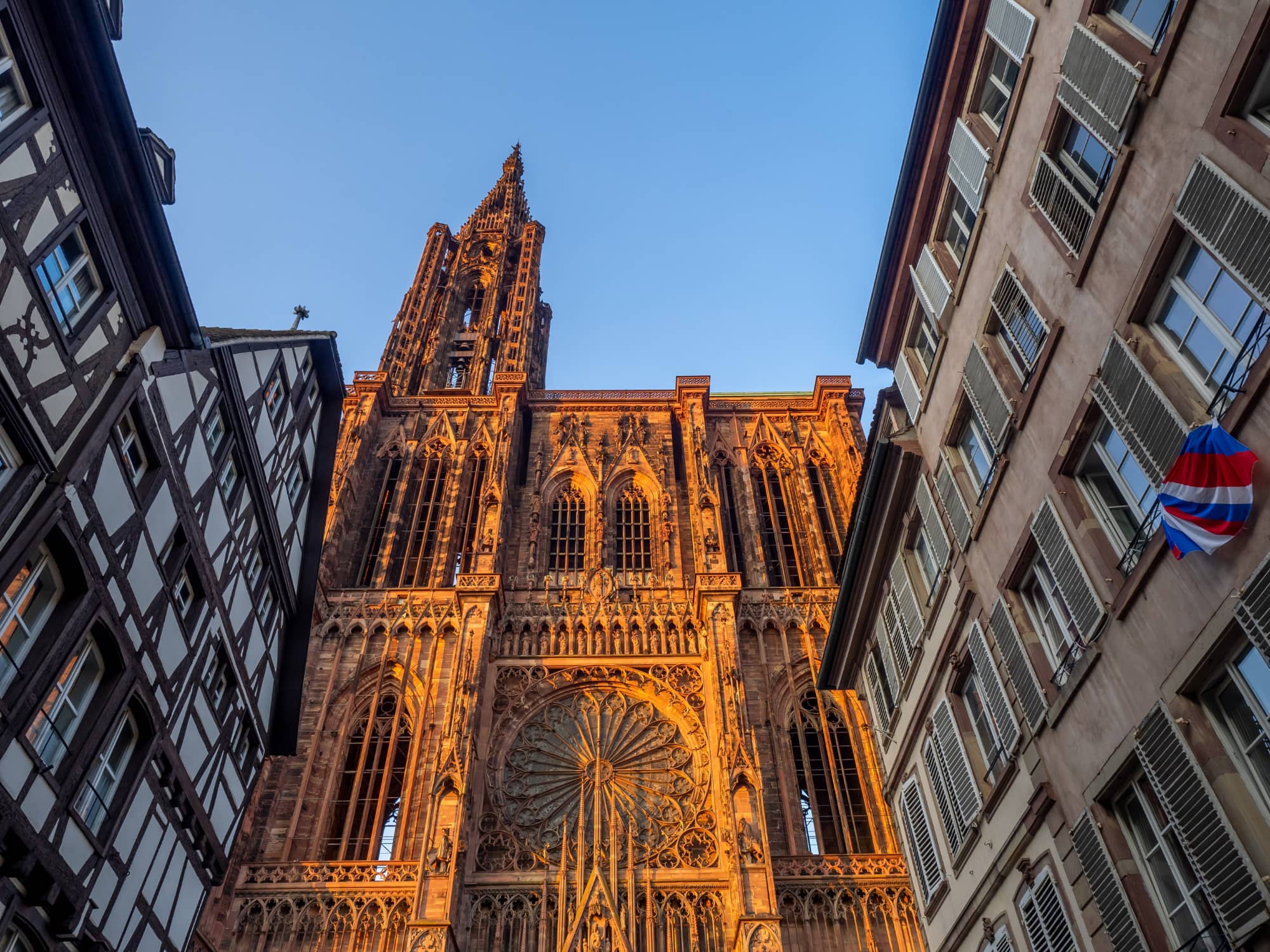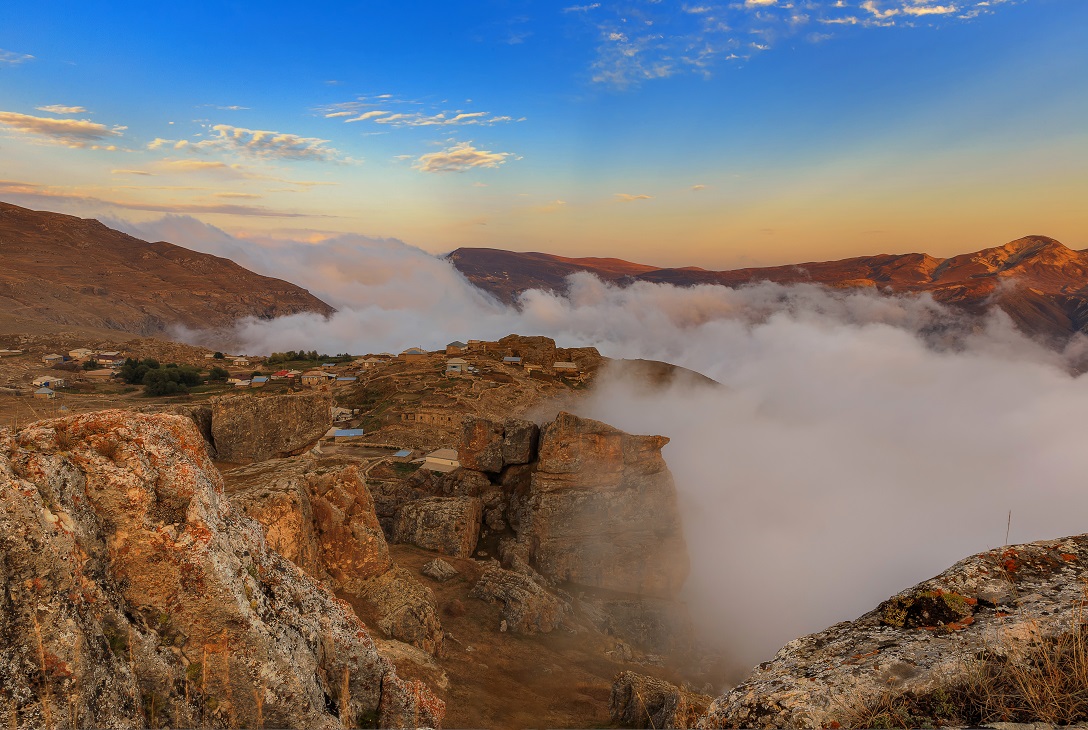A small Sephardic (Spanish) rite temple is in the basement of the Tempio Maggiore. This is a legacy of the ghetto’s Scole, where versions of this rite were observed. Originally located elsewhere, it was transferred here in 1932. The furnishings of the Cinque Scole restored and brought here In 1948.
The hall has an elongated rectangular shape and the bi-focal layout of the Ghetto Scole: the Aron and tevah face each other at the centre of opposite walls – in this case along the longer sides -, while the pews are arranged to face them.
The Aron in polychrome marble comes from Scola Nova; the original tympanum had to be removed because of the height of the ceiling, and at its sides the seats belonging to the tripartite structure of the Aron from Scola Catalana made between 1622 and 1628. The tevah comes from the Scola Castigliana: it was donated in 1851, and is the last, large marble item purposely made for the Cinque Scole.
Site Tag: Attraction
Great Synagogue of Rome -Tempio Maggiore
The imposing building of Tempio Maggiore (The Great Synagogue of Rome) stands on one of the four large blocks put up after the ghetto had been demolished.
Its monumental proportions symbolize the new-found freedom and citizenship rights granted to the Roman Jewish community that had been living in the city for twenty-two centuries.
The building was designed by Vincenzo Costa and Osvaldo Armanni, and inaugurated in 1904. Their choices in style led to an eclectic architecture, with Greek-inspired elements that were felt to be in keeping with the shape of the main local monuments, a style influenced by Assyrian-Babylonian motifs .
The building has a Greek cross plan with a segmented dome above, clearly visible in every panoramic view of the city.
Inside, long rows of pews face the polygonal apse at the end of the hall where a ceremonial raised space enclosed by a balustrade connects the tevah to the Aron. The Aron stands out against a splendid polychrome background with its imposing aedicule structure, with white Assyrian-style columns, friezes and gilded arabesques, and the high tympanum culminating with the Tables of the Law.
The women’s galleries overlook three sides of the hall, and are supported by rows of columns and framed by four large central pillars holding the dome up.
Fine marble furnishings from Cinque Scole (demolished in 1908) are at the top-end of the side aisle in the Temple. The pieces date from the 16th -17th centuries.
The Roman Ghetto
In 1555 Pope Paul IV established the ghetto, with the papal bull “Cum nimis absurdum” (“It is truly absurd”). Nearly two thousand Jews were segregated in the unhealthy area roughly between what is now Via del Portico d’Ottavia, Piazza delle Cinque Scole and the River Tiber, which meant the ghetto was often flooded by the river. Their numbers would grow to five thousand by the 19th century.
Not much remains of the district’s original crowded and multi-tiered lay-out. When it was finally opened up in 1870, a regeneration plan for the capital city led to it being completely gutted and rebuilt into four large, modern blocks.
As far back as the 13th century, numerous groups of Jews had settled in the Sant’Angelo District, attracted by the large number of merchants and crafts in the area.
The ghetto area was enlarged in several waves, so that by the 18th century it had five entry gates. Piazza Giudea was roughly between what are now Via del Portico d’Ottavia and Piazza delle Cinque Scole; this is where the main allowed business – money lending and second hand trade, especially cloth – took place.
On Piazza delle Cinque Scole, approximately where number 37 is today, the building of the Cinque Scole once stood; it was demolished between 1908 and 1910.
The building of the Cinque Scole stood on the square by the same name, approximately where number 37 is today. It was demolished between 1908 and 1910.
According to the Papal Edicts, all the synagogues of the various Jewish congregations living in Rome had to be housed together which meant five synagogues from different traditions were brought under one roof.
The ghetto was demolished between 1886 and 1904 under the 1873 development plan of Roma Capitale. The area where it stood for three centuries is still today the heart of Jewish life in Rome.
Alsacien Museum of Strasbourg
A memory of Judaism in Alsace. A unique collection, testimony to rural and ancient communities, displayed from the very beginning in the museum.
The Musée Alsacien has one of the most important collections of Judaica in Europe, thanks in particular to the special link established in 1907 with the “Société d’histoire des Israélites d’Alsace et de Lorraine (SHIAL)”. This society, created by Rabbi Moïse Ginsburger in 1905, initially aimed to collect and preserve documents and objects related to the history of the Jews of the region, so that they would remain in Alsace rather than be sent to Berlin, the capital of the German Empire to which Alsace belonged at this time.
In 1907, the SHIAL was tasked by the founders of the Alsatian Museum to create a collection of Judaica for the museum newly opened to the public. The Society collected and placed objects, which today represent nearly 400 items, in addition to the museum’s own acquisitions. This partnership, which is more than a century old, shows that from the beginning this project to report on the Alsatian identity fully integrates the Jewish communities. This approach has continued throughout the history of the Musée Alsacien: acquisitions, publications and also presentations. Thus, the Judaica are not confined to the “religions and beliefs” section, but are integrated, along with the other religions of the concordat (Protestantism/Catholicism, Judaism), into the presentation of the different ages of life and into temporary exhibitions.
The donation of the Genizah of Dambach-la-Ville has enriched the Alsatian Museum both digitally (900 items) and scientifically, and it now possesses one of the most important collections of mappot in the world, including several from the 17th century. This exceptional collection was unveiled to the public at the “Héritage inespéré” exhibition in October 2016.
http://judaisme.sdv.fr/today/musals/galerie.ht
Cathedral of Notre Dame of Strasbourg
To observe the wonderful front of the cathedral, with its multitude of figures/sculptures takes several hours ! Its particularly rich statuary tells countless stories to the attentive observer.
The main front, the most richly decorated, presents on its right portal the Tempter, surrounded by the Wise and Foolish Virgins, on the left portal the battle of the Vices and the Virtues. Between the two, the central portal evokes the passion and resurrection of Christ.
Continuing the observation from the Place du Chateau (Castle Square), we will let our eyes linger on the south portal and more particularly on the pair of sculptures of the Church and the Synagogue, placed on either side of these portals. They originally framed a figure of King Solomon, an artwork that has now disappeared. These two female figures, allegories of the Christian and Judaic religions, are among the most famous masterpieces of Western art in the Middle Ages.
Medieval Mikveh (Ritual Bath)
It was in 1984, during the refurbishment of a block of houses at number 20 rue des Charpentiers, near the cathedral, that the remains of a mikveh (ritual bath) were discovered, the last witness to the intense life of Judaism in medieval Strasbourg.
Present in Alsace since antiquity, the Jews were expelled from Strasbourg during the pogrom of 1349 and saw their places of worship being closed or destroyed.
Of this bath used for the ritual purification of women and certain pious men, a small, almost square cellar of about 9 m² remains, with a basin in the center that can hold up to 500 liters of water directly from the groundwater, to which hot water was added. The walls had niches for candles, and a small adjoining room served as a checkroom.
Medieval Mikveh (Ritual Bath)
It was in 1984, during the refurbishment of a block of houses at number 20 rue des Charpentiers, near the cathedral, that the remains of a mikveh (ritual bath) were discovered, the last witness to the intense life of Judaism in medieval Strasbourg.
Present in Alsace since antiquity, the Jews were expelled from Strasbourg during the pogrom of 1349 and saw their places of worship being closed or destroyed.
Of this bath used for the ritual purification of women and certain pious men, a small, almost square cellar of about 9 m² remains, with a basin in the center that can hold up to 500 liters of water directly from the groundwater, to which hot water was added. The walls had niches for candles, and a small adjoining room served as a checkroom.
Alsacien Museum of Strasbourg
A memory of Judaism in Alsace. A unique collection, testimony to rural and ancient communities, displayed from the very beginning in the museum.
The Musée Alsacien has one of the most important collections of Judaica in Europe, thanks in particular to the special link established in 1907 with the “Société d’histoire des Israélites d’Alsace et de Lorraine (SHIAL)”. This society, created by Rabbi Moïse Ginsburger in 1905, initially aimed to collect and preserve documents and objects related to the history of the Jews of the region, so that they would remain in Alsace rather than be sent to Berlin, the capital of the German Empire to which Alsace belonged at this time.
In 1907, the SHIAL was tasked by the founders of the Alsatian Museum to create a collection of Judaica for the museum newly opened to the public. The Society collected and placed objects, which today represent nearly 400 items, in addition to the museum’s own acquisitions. This partnership, which is more than a century old, shows that from the beginning this project to report on the Alsatian identity fully integrates the Jewish communities. This approach has continued throughout the history of the Musée Alsacien: acquisitions, publications and also presentations. Thus, the Judaica are not confined to the “religions and beliefs” section, but are integrated, along with the other religions of the concordat (Protestantism/Catholicism, Judaism), into the presentation of the different ages of life and into temporary exhibitions.
The donation of the Genizah of Dambach-la-Ville has enriched the Alsatian Museum both digitally (900 items) and scientifically, and it now possesses one of the most important collections of mappot in the world, including several from the 17th century. This exceptional collection was unveiled to the public at the “Héritage inespéré” exhibition in October 2016.
http://judaisme.sdv.fr/today/musals/galerie.ht
Cathedral of Notre Dame of Strasbourg
To observe the wonderful front of the cathedral, with its multitude of figures/sculptures takes several hours ! Its particularly rich statuary tells countless stories to the attentive observer.
The main front, the most richly decorated, presents on its right portal the Tempter, surrounded by the Wise and Foolish Virgins, on the left portal the battle of the Vices and the Virtues. Between the two, the central portal evokes the passion and resurrection of Christ.
Continuing the observation from the Place du Chateau (Castle Square), we will let our eyes linger on the south portal and more particularly on the pair of sculptures of the Church and the Synagogue, placed on either side of these portals. They originally framed a figure of King Solomon, an artwork that has now disappeared. These two female figures, allegories of the Christian and Judaic religions, are among the most famous masterpieces of Western art in the Middle Ages.
Qriz village
Qriz is a village on the eastern slope of the Shahdagh mountains inhabited by a small ethnic group of Qriz people. According to the legend, Jewish populations found shelter in Qriz, as well as other high mountains around it, during the persecutions of Nadir Shah.
